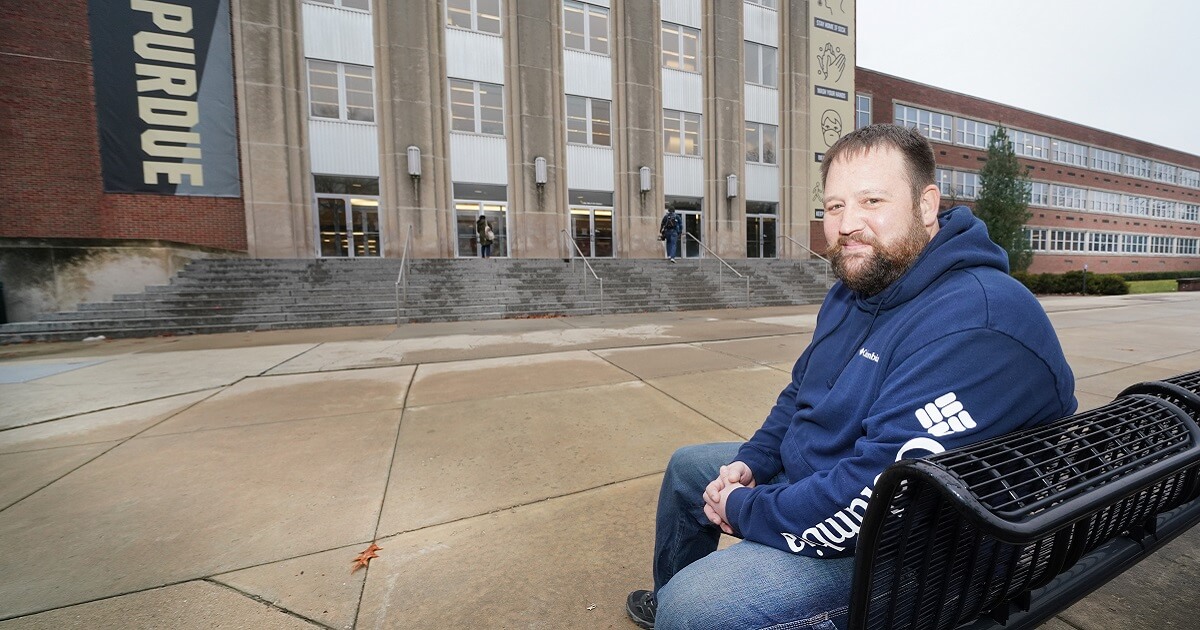Behind the Research: Jason Deitrich
About the feature
Many people are involved in the remarkable range of programs, services and facilities that undergird research in the College of Agriculture. Collectively they’re integral to the college fulfilling its research mission. “Behind the Research” explores their individual roles. Each academic year, we profile six people whose work supports the College of Agriculture’s global reputation for developing innovative, multidisciplinary solutions to challenges and then putting those solutions into action.
Jason Deitrich, Facilities Manager, Department of Agronomy
- Modernized building operations and communication systems for the LILY research complex.
- Created a cooperative environment in which multiple departments and colleges share capital equipment within the facility to help reduce costs.
- Reduced the number of safety violations associated with annual OSHA and REM inspections by almost 40 percent through the use of cost-sharing abatement programs available on campus.
 Jason Deitrich, Facilities Manager, Department of Agronomy
Jason Deitrich, Facilities Manager, Department of Agronomy Jason Deitrich probably knows Purdue’s Lilly Hall of Life Science better than anyone else on campus. He oversees the overall operation, maintenance, and safety and security of Lilly Hall, the Life Science Animal Building, and Life Science Plant and Soils Building — space totaling 550,000 square feet.
The Logansport, Indiana, native studied computer technology at Purdue for two years before joining the university’s physical facilities department in 2005 as a refrigeration technician. He received on-the-job training as he advanced in the department, first to indoor air quality technician and then to crew chief. He was named building deputy in 2016 and facilities manager in 2019. That background, he says, enables him to communicate with people doing hands-on work in the building today.
Lilly Hall, once the largest single academic structure on campus, is a complicated mix of old, new and renovated. The south wing dates to the late 1950s. “That has a huge impact on what we repair,” Deitrich says. “We have to repair it for current use, but we also have to use resources wisely.”
Deitrich also has focused on upgrading building operations and communications. He implemented a new online key request system and tracking software, created a facility email list, and provided multiple modes of communication for the people who work there. “I think I’ve brought us into the 21st century,” he says, noting that a cell phone has replaced the pager he used to carry. “Younger grad students prefer to text me,” he adds.
His goal is to exceed the occupants’ expectations so they can do their jobs: “By identifying issues before they become problems, the researchers and students can concentrate on our wide-ranging research, teaching and extension missions.”
The building houses nine major departments and offices, and Deitrich interacts with people in all of them. He also works with the greenhouse manager and with animal care technicians on facility issues. His job brings him in contact with faculty, undergraduate and graduate students, visiting scholars and postdocs. He currently is working with Chris Hoagland, facility manager for the Ag Alumni Seed Phenotyping Facility, on upgrades for the new greenhouse.
Deitrich values his job for its flexibility and the variability of what each day might bring, from changing a light bulb to handling a major flood. He is responsible for building reports, the results of safety inspections, compliance with OSHA and hazard certifications. He keeps a running to-do list for daily, weekly and monthly tasks.
“This is truly a 24/7 operation,” Deitrich says. An assistant building deputy, Ron Steiner, backs him up, but a big snowstorm or power outage will bring Deitrich to campus during his off hours to check on equipment.
“I’m pretty even-keeled,” he says of stressful predicaments. “I don’t get worked up about very much because it doesn’t help the situation. I’m more, ‘Let’s just work on the repair.’”
The sheer number of activities that occur in these spaces presents a challenge, he says. “We have a ton of people in here every day,” he says. “But I have a great support staff, and the departments help out tremendously. We depend on each other.”





